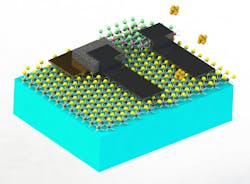Tiny Floating Machines for Micro-Scale Monitoring
One of the main objectives of the Internet of Things is to collect and analyze data. The excess of sensors being applied to industrial manufacturing settings is providing insight into production enhancements, predictive maintenance, and cost savings. The same methodology is being applied in the world of medicine. Small-scale sensors and robots are being used to monitor humans. Researchers at the Massachusetts Institute of Technology presented their designs for tiny floating robots to the 255th National Meeting & Exposition of the American Chemical Society (ACS), the world’s largest scientific society.
What Can Small-Scale Robots Offer?
Michael Strano, Ph.D. leads a research team that has developed a method of producing tiny floating robots that can serve as probes. These probes can explore a person’s gastrointestinal system for disease or the environment for pollutants. The researchers have described a new marriage of materials that combine ultra-thin 2D electronics with miniature particles to create microscopic machines.
“You can make electronic circuits that are a single atom thick,” Strano says. “One creative use no one has thought of until now is taking these electronics and grafting them onto a colloidal particle.” Colloidal particles are microscopic solid particles suspended in a fluid. Colloids are small enough to use thermal energy ve and achieve equilibrium with the suspending fluid. They are also large enough that their positions and motions can be measured precisely using optical methods, such as light scattering and laser-scanning confocal fluorescence microscopy. The particle has simple computing functions that can be monitored for data collection and feedback.
This schematic diagram of a microscopic chemical detection machine depicts a micrometer-sized polymer particle coated with a nano-electronic circuit. (Credit: Michael Strano)
The research team predicts that these micro-machines will be used to monitor large areas for bacteria or spores, or even smoke, dust, and toxic fumes. By introducing the concept of an aerosolizable electronic device, one can achieve a significant cost savings compared to other satellite or drone search alternatives.
One example presented by Volodymyr Koman, Ph.D., a research fellow in Strano’s group at MIT, is the use case of tiny devices in a simulated gas pipeline. The team tested the flying machines successfully in the test chamber, detected the presence of carbon particulates or volatile organic compounds in the chamber, and successfully stored the data within its memory.
The data is stored on retroreflectors placed on the particles. Through them, the researchers are able to download the information for further analysis. The particles have a designated metallic connection, like a socket, for readouts. One can read the information via the two probes on the particle. The memory can be wiped for reuse once the data has been downloaded.
Construction of the Tiny Floating Robots
To construct the tiny floating robots, the researchers developed a compatible set of electronic components for the particle’s coating to form a closed autonomous circuit. It took the team some effort to find a specific marriage of components to meet the exact power and energy requirements. They chose a biocompatible material, SU-8, for the micrometer-sized particles, and lithographically etched them to create a closed circuit consisting of a power source, a detector, and a memory device.
The power source is a p-n heterojunction of MoS2 and WSe2 that can convert light into electric current. Both MoS2 and WSe2 are 2D semiconductors. A distinct single layer of MoS2 is a chemi-resistor serving as the detector, designed to change its electrical resistance in response to an environmental agent. The electrical output is stored in a memory device, which is made of a separate layer of MoS2 flakes sandwiched between gold and silver electrodes.
To ensure the particle’s mobility and stability, the research team checked how far the electronic particle could travel. 2D materials possess a higher strain limit compared to similar materials. The team aerosolized them and propelled them toward a target. It found the particles were able to fly a couple of feet.
The next step is to develop particles for specific applications. This includes monitoring applications in the human digestive system. “This is the right idea and the right time,” says Strano. “Think of these as proto-robots.”


